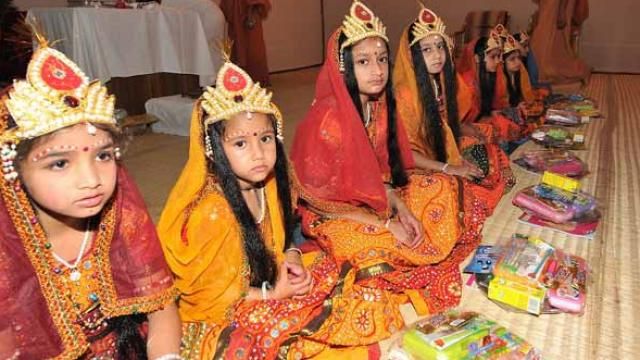Celebrating Mothers’ Day The Indian Way: Navratri
Oct 01, 2019 • 15 views

Navaratri is celebrated in various regions of India and the world, celebrating the power of feminine idol: Goddess Durga. One of the most pivotal events that happen during this nine-days long festivity, is the ‘Kumari Puja’ or the ‘Kanya Pujan’ ritual. It marks the worshipping of young girls who are offered food and gifts by those who observe the nine-days long Navaratri fast.
This trend came into being in the year 1901; started by Swami Vivekananda who initiated such activity in Belur Math with the idea of spreading the significance of the divine feminine power. Swami Vivekananda pressed on celebrating the coming of Goddess into this world not just as a deity but also as the real living and breathing women of the world. Sri Ramakrishna had said, “ To look upon God as the Mother is the purest and the highest form of Sadhna.”While, in other parts of the world, mothers’ day is a twenty-four hours affair; In India, a mother is the source of ultimate wisdom and given special status for a lifetime.
Even, ‘Durga’ has a literal meaning as being someone ‘invincible’ or ‘unstoppable’. Last year, in the city of Bengaluru, a gated community decided to celebrate this occasion with a very secular name — ‘ Harmony Mahotsav’, thereby celebrating Durga Pooja, Ayudha Pooja, Navratri, Bathukamma and Golu as one big festival covering all the communities from east, west north and south. This splendid tradition also marked the entry of Muslim and Christians by inviting their daughters to the Kanya Bhoj. The main purpose was to make this ritual a non-religious one. With only the spiritual motive as the virtue to lead it on.
Such kinds of news spread the message of secularism and brotherhood. And, in the times of #metoo era, teach us the value of feminity.
